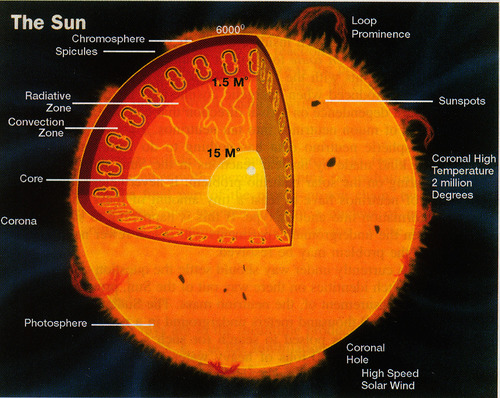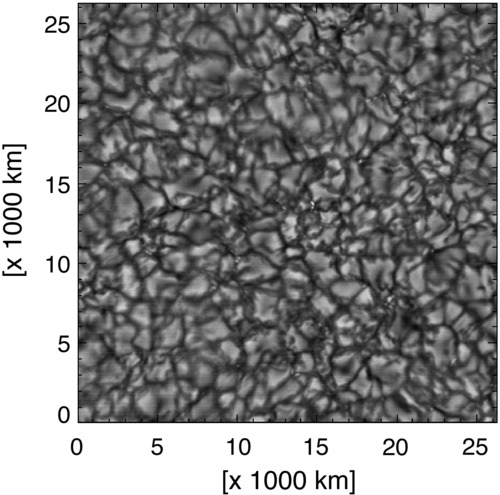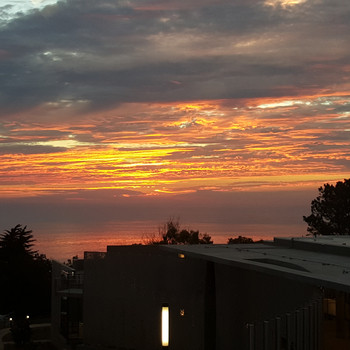Visible light comes from which one of the sun's layers?
1 Answer
Visible light comes from a region just above the sun's surface called the photosphere.
Explanation:
The photosphere is one of three regions in the outer layer of the sun (the region above the sun's surface). It is also the deepest layer of the sun that we can observe without special viewing equipment. The photosphere is about 250 miles (400 kilometers) in height and the temperature ranges from 11,000 degrees Fahrenheit, closest to the sun's surface, to 6,700 Fahrenheit, furthest from the sun's surface (that's 6,200 to 3,700 degrees Celsius).
The photosphere appears grainy because it is comprised mainly of granules which are large masses the sun's plasma, granules are so large in fact that their average diameter is on the order of 1,500 kilometers. A single granule only lasts between 8 to 20 minutes before cooling and being replaced by another, hotter, granule.
I've attached a few pictures below.
The image below gives us a an idea of the sun's structure:

Image Courtesy: Tufts University; Obtained from: https://ase.tufts.edu/cosmos/print_images.asp?id=46; Reused under: Public Domain
The following image gives us a sense of what the granules in the photosphere look like through a telescope:

Image courtesy: Tufts University; Obtained from: https://ase.tufts.edu/cosmos/print_images.asp?id=46; Reused under: Public Domain
I hope this helps!

